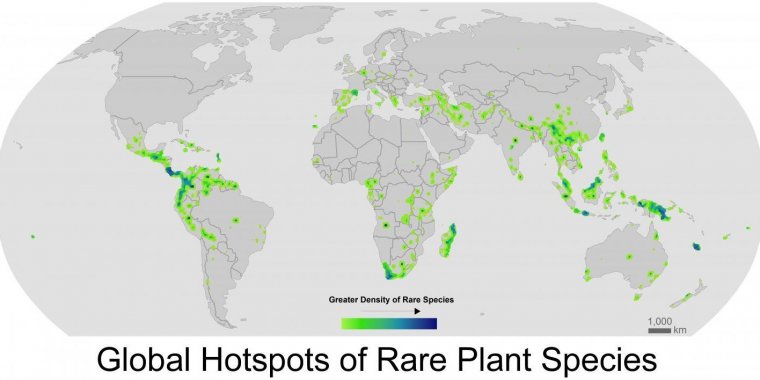| News / Science News |
Nearly 40% of plant species are very rare, and vulnerable to climate change
Almost 40% of global land plant species are categorized as very rare, and these species are most at risk for extinction as climate continues to change.

Researchers mapped the global hotspots of rare plant species. Photo: Patrick R. Roehrdanz, Moore Center for Science, Conservation International Data from Enquist et al.
"We had a good approximation of the total number of land plant species, but we didn't have a handle on how many there really are," said lead author Brian Enquist, an ecologist at the University of Arizona.
Thirty-five researchers from institutions around the world worked for 10 years to compile 20 million observational records of the world's land plants. The result is the largest dataset on botanical biodiversity ever created.
The researchers hope this information can help reduce loss of global biodiversity by informing conservation actions that include consideration of the effects of climate change.
The scientists found that there are about 435,000 unique land plant species on Earth. The team revealed that 36.5% of all land plant species are "exceedingly rare": they have been observed and recorded less than five times.
Rare species tend to cluster in a handful of hotspots, such as the Northern Andes in South America, Costa Rica, South Africa, Madagascar and Southeast Asia.
These regions remained climatologically stable as the world emerged from the last ice age, allowing such species to persist.
The plants had a relatively stable climate in the past, but that doesn't mean they'll have a stable future.
The research also revealed that rare plant species hotspots are projected to experience a high rate of future climate change and human disruption. (National Science Foundation)
YOU MAY ALSO LIKE





